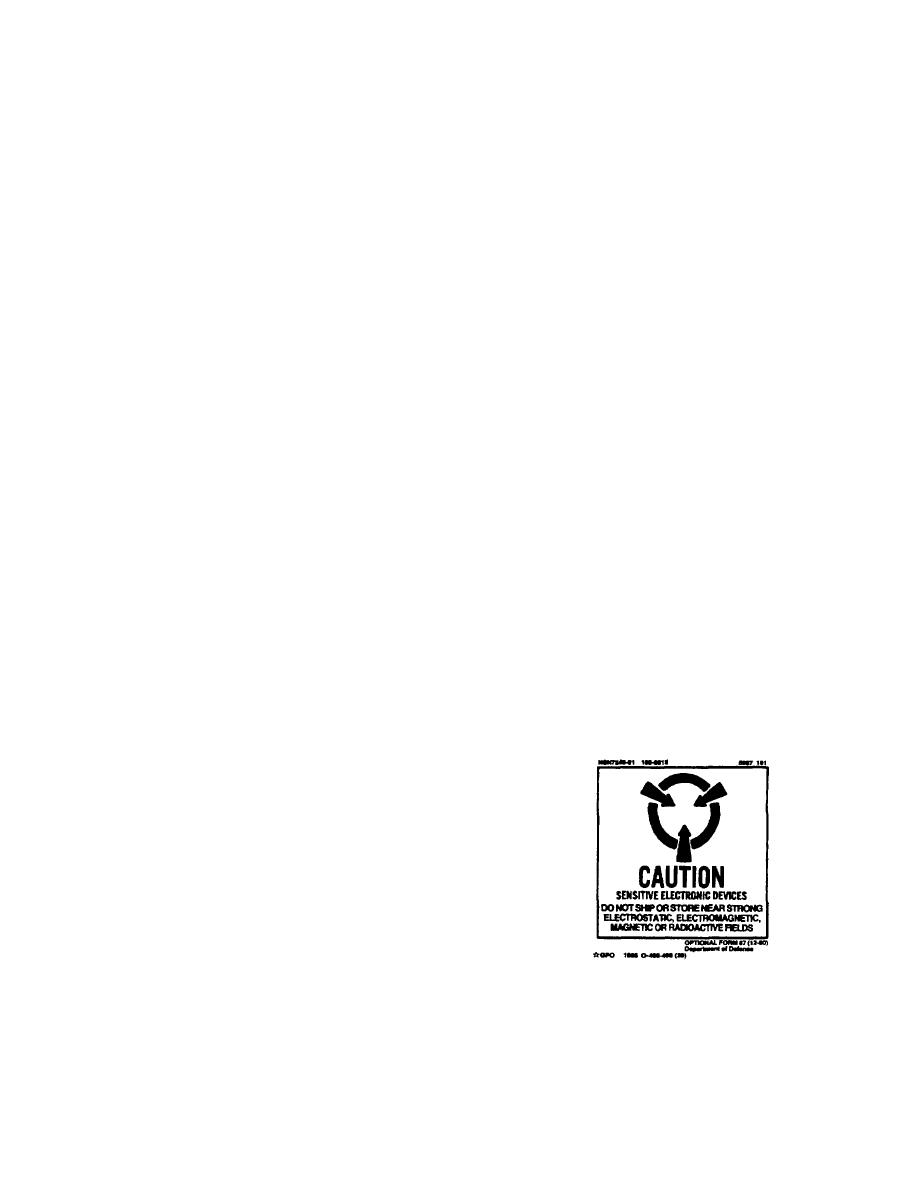 |
|||
|
|
|||
|
|
|||
| ||||||||||
|
|
 TM 38-400/NAVSUP PUB 572/AFMAN 23-210 MCO 4450.14/DLAM 4145.12
longer must be discharged. Tape all cell vent valves
(b) Charged and dry. Batteries may be
with cellophane tape.
stored dry indefinitely. The plates are fully charged,
dried, and stored either in their containers or separately.
(c) Wet batteries may be safely stored
Rubber insulators may be stored dry, but wood
at temperatures from 0 . to 110 . However, the
F
F
separators must be stored in water or in a very weak
lower temperatures within this range are more
electrolyte solution in a sealed container. This method
satisfactory for storage.
is not generally used except for new batteries which are
(5) Safety measures.
shipped dry by the manufacturers. Batteries received
(a) Face shields, aprons, and rubber
charged and dry will be kept closed tightly to prevent
gloves will be provided for personnel handling corrosive
breathing. The batteries can be palletized or stored in
materials.
bins or racks depending on the quantity and size of the
(b) A facility for quick drenching of the
batteries.
eyes and body will be provided within 25 feet of the work
(c) Charged and moist.
For moist
area for emergency use.
storage, batteries are fully charged and the electrolyte
(c) Facilities will be provided for
then removed and stored separately. The batteries will
flushing and neutralizing spilled electrolyte, for fire
be sealed with paraffin wax or battery sealing
protection, and for adequate ventilation of battery
compound. When batteries are stored in this manner,
charging areas to prevent a build-up of explosive gas-air
the seals must not be disturbed until the batteries are
mixture.
ready to be used. This method is least desirable since
(d) Batteries should be separated and
plates and separators are subject to damage. These
identified by type in the storage area.
batteries have a short shelf life, and precautions should
(e) Lead-acid and base-type batteries
be taken to ensure FIFO procedures are followed.
should not be charged at the same time, in the same
(2) Nickel-iron alkaline batteries.
Wet
area. An explosion can result if this rule is not followed.
discharged nickel-iron alkaline batteries may be stored
(f) Medical assistance should be
for temporary periods in any state of charge without
deterioration. When prolonged storage is anticipated,
sought immediately in case of injury as a result of
the battery will be discharged to zero voltage and short
battery-related accidents.
circuited in trays of five or six cells each. Store in a
clean, dry area with the solution at the prescribed level.
5-21. Electronic Materiel.
Make certain the filler caps are in a closed position.
Many electronic devices are highly susceptible to
Nickel-iron alkaline batteries are shipped dry only for
damage and deterioration from electrostatic discharge
overseas shipment.
Electrolyte accompanies the
(ESD) even at levels which can be neither seen or felt.
battery in a separate container, along with specific
If either label shown in figure 538 are on unit or
instructions for filling and charging the battery.
intermediate packs, then these items must not be stored
(3) Nickel-cadmium batteries.
within 3 feet of any electrostatic, electromagnetic,
magnetic, or radioactive generating equipment or
(a) Wet (vented cells)-electrolyte free
material.
flowing or flooded will not be stored with intertray
connectors attached. In addition, cell tops will be coated
with petroleum jelly to protect the metals. These
batteries should not be exposed to temperatures
exceeding - 65 . to +120 .
F
F
(b) Dry (sealed cell)-electrolyte is not
free flowing or flooded. These batteries should not be
exposed to temperatures exceeding - 58 . to +122 .
F
F
This is the preferred type nickel-cadmium battery.
(4) Silver-zinc batteries. Silver-zinc batteries,
uncharged-dry, may be stored indefinitely.
(a) Dry batteries which are shipped in a
dry condition and which will not be placed in service for
Figure 5-38. ESD Label.
30 days or more will be stored in the dry condition at a
temperature not to exceed 150 .
F
a. Radioactive materiel. See paragraph 24, this
section and chapter.
(b) Wet batteries stored for 30 days or
5-70
|
|
Privacy Statement - Press Release - Copyright Information. - Contact Us |